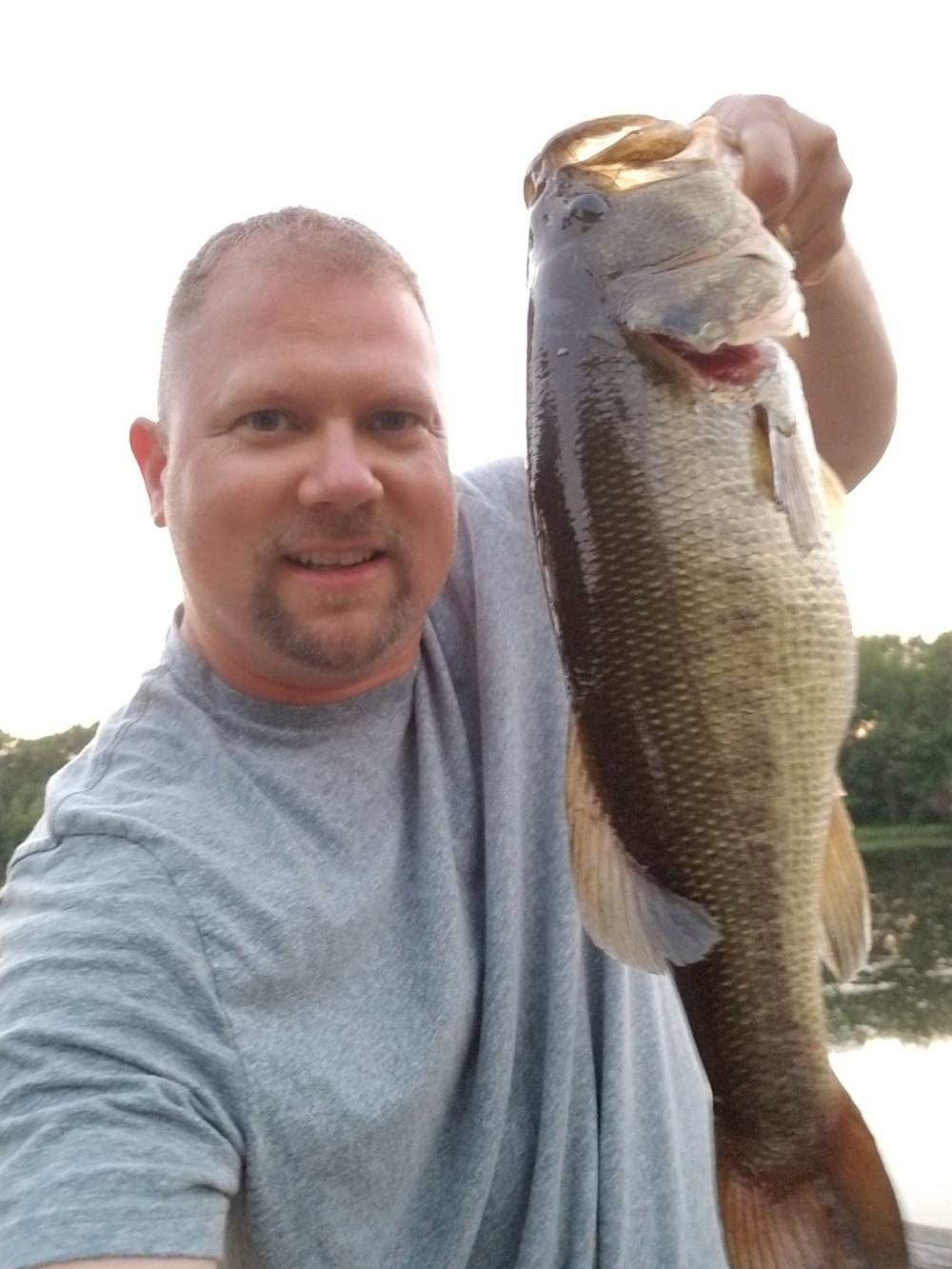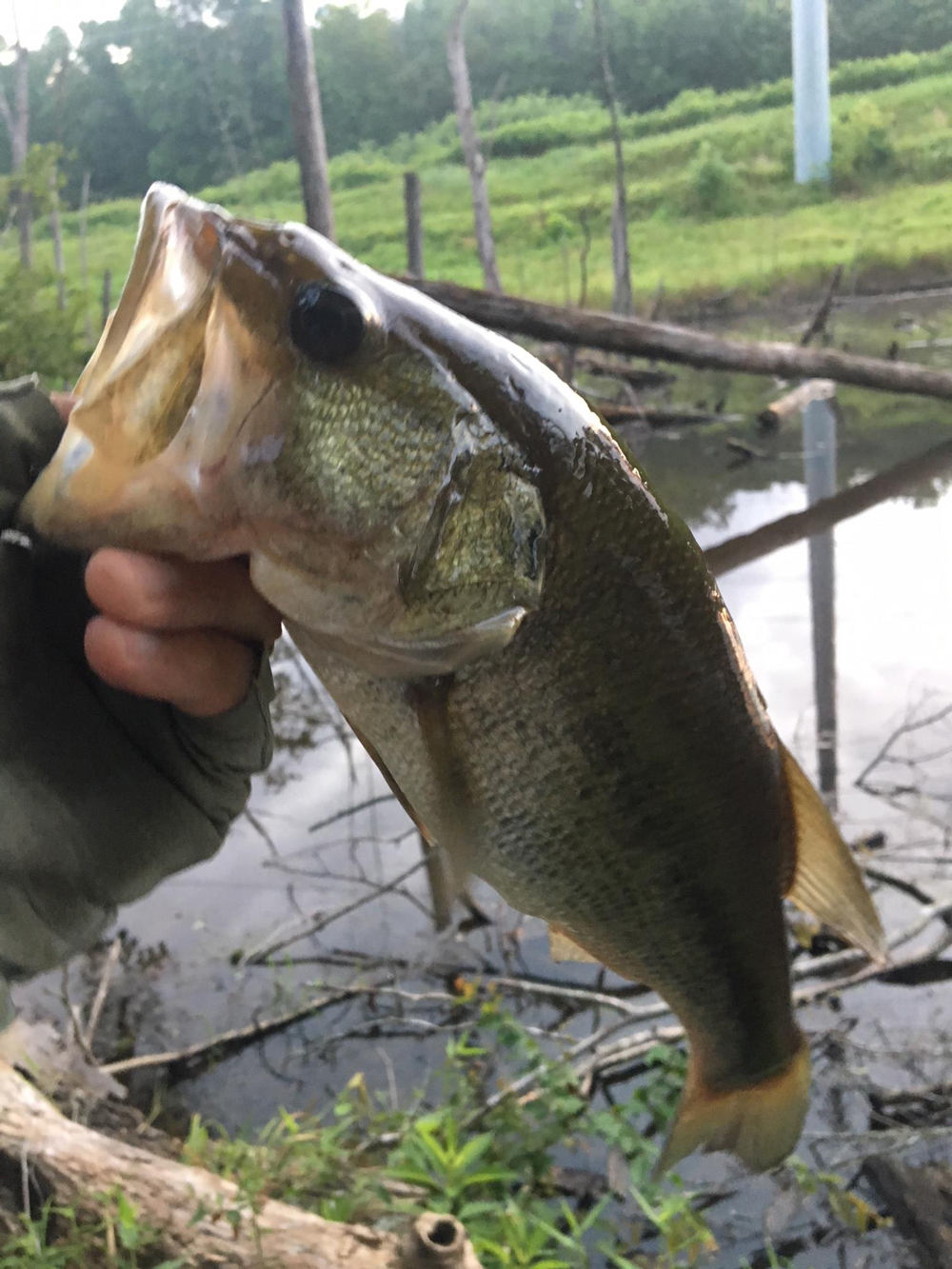Mid-Atlantic Freshwater Fishing Report, 7/27/2018 Update:
Warning: Due to the torrential downpours and high winds, the fishing report may be a bit abbreviated this week. It was difficult to locate many people who were able to fish, much less those who have caught, within the past five days.
Although Mossy Creek Fly Fishing reported that mountain streams have been out of commission due to high water levels and murky water, many reservoirs and lakes are still experiencing some killer bass fishing, despite the rain. Clyde’s Sport Shop also reported that flyfishers haven't been having great success due to poor visibility, however, in the Baltimore area, Loch Raven has continued to provide a steady bass bite, particularly in the early morning and late afternoon when bass are most active. They’ve primarily been taking topwater lures. Similarly, Herbs reports both small and largemouth bass actively taking little jitterbugs during dawn and midday cloud cover.

With the water this riled up it’s difficult to say which areas will or will not be fishable this weekend, as runoff continues to make its way downstream in rivers and creeks. As we saw earlier this season, heading to large bodies of water with relatively low water flows is a freshwater angler’s best bet. That’s said, catfish will continue to bite in the murk so the James, York, Rappahannock, and Potomac Rivers all can still provide some action. We need to add a note of caution, however, as up-river areas may still be dangerous due to high flows and down-river areas are subject to flotsam like tree branches and logs that were washed out in the deluges. It may be smart to head for areas where the rivers widen out (such as down-river of Claremont on the James, Occupacia on the Rap, and Indian Head on the Potomac) but bottom line, be careful no matter where you head this weekend.
Mid-Atlantic Freshwater Fishing Report, 7/19/2018 Update:
This week, contributor Jim Gronaw had a lot of great information for you freshwater anglers. Stream fishing for smallmouth bass and various sunfish species has been good in many Potomac and Monocacy River tributaries, with small crankbaits like Rebel Teeny Crayfish and classic floating Rapalas getting a lot of action. With less rain the past several weeks water levels have settled to summer norms, and river fishing is good. Tailwater trout fishing in streams such as Codorus, Big Hunting Creek, and the Gunpowder has been consistent with fly anglers making the bulk of the catch on both bead head nymphs and terrestrial patterns. Where permitted, small crank baits will get the attention of larger trout as well as small in-line spinners in blade sizes #0 to #2. We strongly recommend pinching the barbs down on these baits as to assure safe release of trout and other species. Be sure to check any and all trout fishing regulations as they vary from one stream to the next.

Early morning bass fishing efforts with plastics has been effective with occasional four to five pound class fish, especially on cloudy days or just prior to a front. Additionally, fly-rod action on big bluegills remains consistent with #10 spider or bully patterns as the top choices. Evening appears to be the best time to cash in on insect-feeding bluegills and don't be surprised if a quality largemouth bass takes a popping bug or a foam spider.
Clyde’s Sport Shop tells us that largemouth and smallmouth bass have been active particularly early in the morning. Clyde’s said using a buzzbait for snakehead should do the job if the fish are in the area; the Blackwater complex and the Potomac creeks have been the best bets for this species recently. If you’re on the Potomac – or the upper Rap or James – consider dropping some cut fish chunks to the bottom in holes and channels, where blue cats are being found. Although this species is sensitive to pressure changes and thus the bite has been a bit sporadic recently, when the weather stabilizes the bites are nonstop.
Farther to the west, trout fishing has been good as smaller rivers and streams are now clear and primed for a fly fishing experience.
Mid-Atlantic Freshwater Fishing Report, 7/13/2018:
Reader reports from up and down the region indicate that many ponds and smaller, shallower bodies of water are now weed-choked and more difficult to fish. Weedless topwater, like frogs, used at dawn is the best way to get bass biting in these areas. The Eastern Shore millponds have become tough but there have been reports of snakeheads showing up below the spillways of some of the ponds, including in Laural and Salisbury. The Blackwater remains the top destination for snake-hunters. Reports from the Western Shore tributaries are of better, but in some areas still discolored, water quality. The Susquehanna is also in decent shape despite the high flows and Clyde’s Sport Shop notes that both largemouth and smallmouth have been active in the river particularly early in the morning. Farther to the west, trout fishing has been good as smaller rivers and streams are now clear and flowing at excellent levels. For a new challenge and a peaceful experience, give Tenkara fly fishing a try in these areas.

Deep Creek Outfitters reported that fishing on the lake is in full swing, with the waters packed full of boats. Walleye have been in deep holes, while large and smallmouth bass are in their typical summer behavior patterns, keeping to shallows and hitting little spinner baits and soft plastics up top at daybreak then scurrying for cover once the sun is high in the sky and the many boaters come out to play. Bass have been active in the majority of local Baltimore-area reservoirs and lakes, sticking to this same behavior pattern of feeding shallow at daybreak then shifting deeper as the mercury rises.
Reports from Anna and Bugg’s Island indicate more of the same but also with a striper bite taking place, fairly deep (25’ and down) for anglers fishing live baits and also trolling diving plugs, to a lesser degree. Blue cats have also been biting, plus some crappie coming mostly from around the bridges. In Bugg’s, the bridges around Clarksville have been a good bet.
Mid-Atlantic Freshwater Fishing Report, 7/6/2018:
While the worst of the monsoon season appears to be past, several readers report that area reservoirs have stratified due to the extreme volume of runoff. Several feet of good visibility on top, then cloudy water below. Our friend and reader Eric Packard had noticed this at St. Mary’s lake but reported that the bass bite was still pretty strong, catching 10 in a morning on his kayak plus eight pickerel and a pair of crappie. Water temperature was in the mid 80s.

The change seems to be making crappie fishing tougher and mid-day fishing, too, when species like bass have moved deep, but the shallows at daybreak are still good for bass on topwater. And at Lake Anna there are still reports of strong striper action for those fishing live bait, especially if they send it deep (over 25 feet) during the mid-day hours. Trollers pulling lipped crankbaits have been catching some fish as well. Best areas are from The Splits down past the 208 bridge – where crappie anglers have been jigging some slabs off the pilings, with two and three inch tube jigs.
In the Delaware and Delmarva millponds, you’ll still catch fish but fishing has become tough as weed growth is now heavy and the water is extremely warm. A big part of fishing this type of water right now is finding open areas, casting weedless topwater (for bass) and fishing early in the day before the thermometer pops. We also had a couple reader reports of snakeheads coming from the Eastern Shore this week, but that action does seem to have slowed up and hit a summertime lull, at least for the moment.
River anglers throughout the western segment of the region are happy to finally have reasonable water levels and most of the muddy waters have cleared out. As of their latest report Mossy Creek says that streamers and nymphs are the way to go as long as water have cleared but levels remain on the high side. In the Maryland put-and-take areas, the DNR is reporting that there are still trout to be had in the delayed harvest areas. Reports from the upper James, Rappahannock, and Potomac are all of (finally) clearing water.